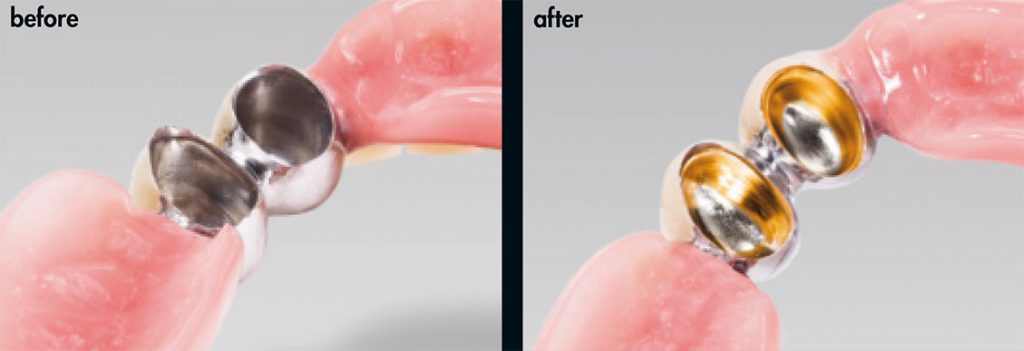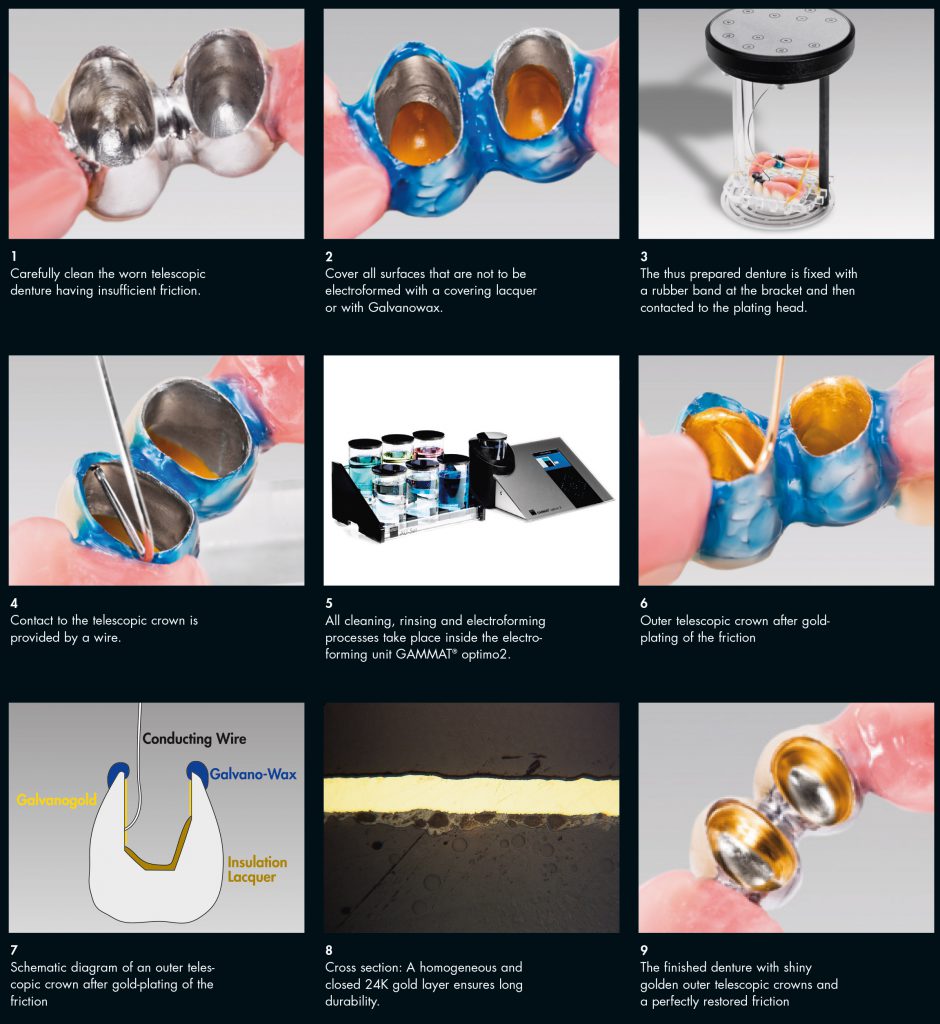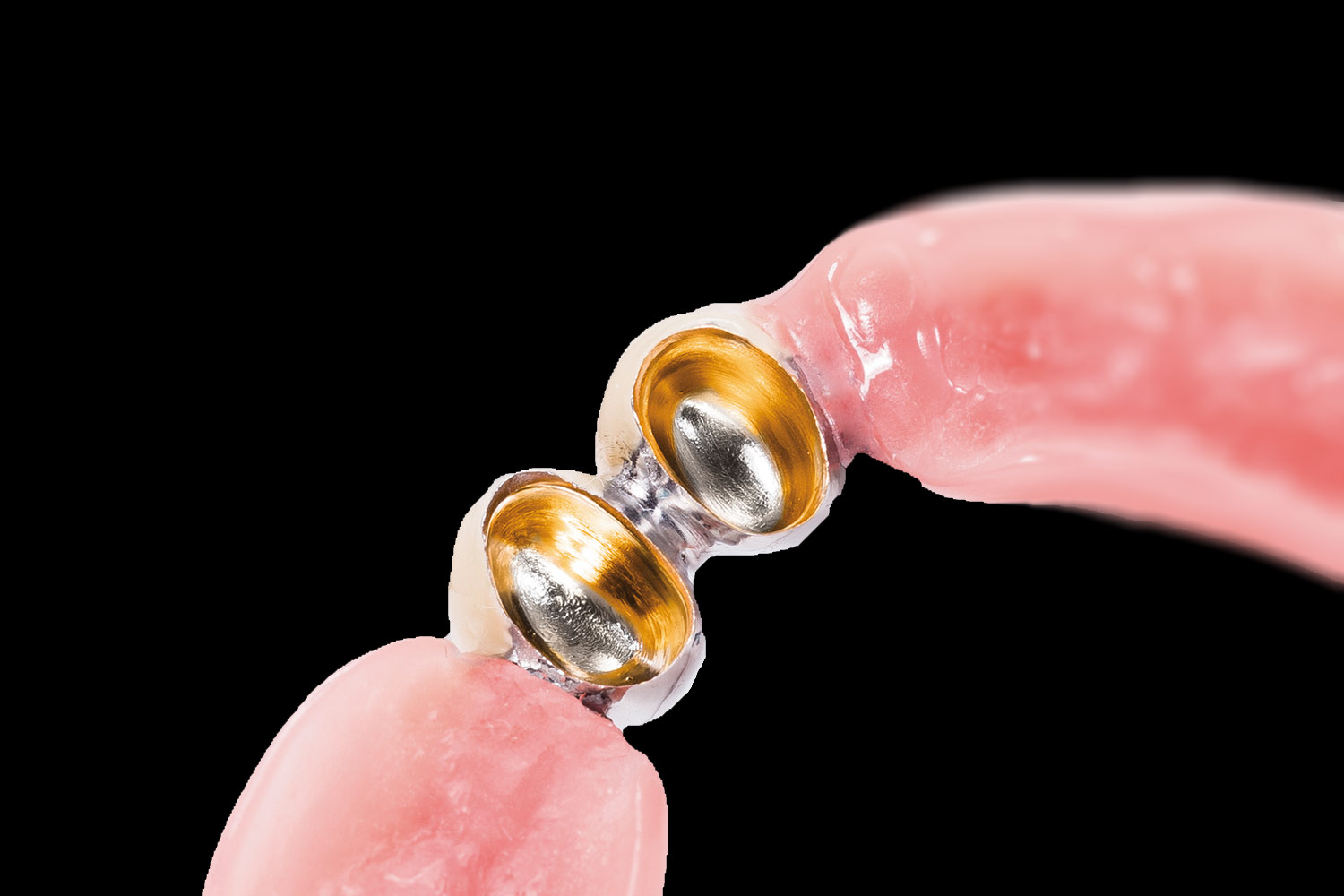Friction renewal of worn telescopic dentures – accurate, functional and time tested
The problem
Which dentist doesn’t know this problem: A telescopic case – where the patient probably had to pay quite some money himself/herself – has lost its original friction in the course of time.
But which possibilities are available that ensure a suitable repair of the high-quality dental restoration within no time and nevertheless affordable for the patient?
The realization
The most elegant method to restore the friction is definitely the direct deposition of an electro-plating material into the outer telescopic crown. For this, the GAMMAT® optimo2 system uses the advantages of the electroforming technique: Its sensor-controlled deposition and the unique hydrodynamics guarantee a homogeneous layer formation. A pre-gold-plating layer of only a few tenths of a micrometer are sufficient to achieve a safe bonding compound between the casting alloy of the outer telescopic crown and the 24K gold of the friction layer.
The application of a circular gold layer inside the outer telescopic crown takes place in an electroforming process where the duration depends on the number of telescopic crowns and on the thickness of the deposition layer. A thickness of 5, 10 or 15 µm is possible.
Due to the homogeneity of the gold layer applied, the telescopic crowns go smoother again; i.e. the renewed friction functions again. The small amount of electroforming gold required keeps the costs low. If possible, the patient should stay at the dental lab for checking purposes until the friction renewal is finished.

The conclusion
Finally, it’s safe to say that the friction renewal method developed by the Gramm Technik Company is the most elegant technique by far. Not only that it uses a high-quality material, but it even ensures
the targeted application of gold – allowing the use of the word friction at all while in the majority of the other systems it can only be talked about tilting or wedging. Furthermore, this system now benefits from a practical experience of more than 10 years providing consistently positive results and
a favourable long-term prognosis.



